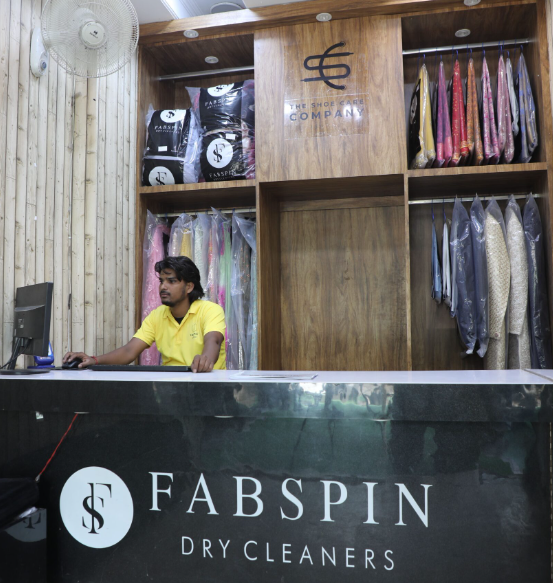- All Plans
- Yahoo Press Release
- Bloomberg Press Release + Yahoo Finance
- Business Insider Press Release
- Benzinga Press Release
- Digital Journal Press Release
- US Times Now Press Release
- AP News Press Release
- Yahoo Finance Press Release
- Street Insider Press Release
- MSN News Press Release
- USA Today Press Release
Complete Guide to Lehenga Dry Cleaning at Home

Delhi, India, 11th Sep 2024 – A lehenga is not just a piece of clothing; it is a symbol of tradition, culture, and personal style. Whether it’s worn for weddings, festivals, or other special occasions, a lehenga is often made from delicate fabrics, intricate embroidery, and embellishments that require extra care. Dry cleaning is usually recommended for these garments, but if you’re looking to clean your lehenga at home, this guide will walk you through the process while ensuring its beauty is preserved.

1. Know the Fabric of Your Lehenga
The first step to dry cleaning your lehenga at home is to understand the fabric it’s made from. Different fabrics require different cleaning methods, and knowing what you’re working with will help you avoid damaging your lehenga.
- Silk: Silk lehengas are luxurious but delicate. Avoid using water, as it can cause water spots. Instead, opt for a dry-cleaning solvent suitable for delicate fabrics.
- Velvet: Velvet is prone to crushing and staining. It’s essential to use a fabric brush to remove surface dust and avoid soaking it in any liquid.
- Cotton and Georgette: These fabrics are easier to care for and can often be hand-washed gently. However, they should still be treated delicately to avoid wear and tear.
- Chiffon and Organza: Lightweight and sheer fabrics like chiffon require extra attention. Avoid rubbing the fabric harshly, as it can stretch or tear easily.
2. Remove Stains Carefully
Stains on your lehenga can be tricky to handle, especially when dealing with delicate fabrics. Here are some methods to carefully treat different types of stains at home:
- Oil Stains: Sprinkle talcum powder or cornstarch on the oil stain and let it sit for a few hours. The powder will absorb the oil, making it easier to clean. Gently brush off the powder afterward.
- Ink Stains: Use a cotton ball soaked in rubbing alcohol to dab (not rub) the ink stain. Be careful not to spread the stain further.
- Sweat Stains: Mix equal parts of lemon juice and water to treat sweat stains. Use a soft cloth to gently blot the area, then let it air dry.
- Food Stains: Blot food stains with a damp cloth and avoid scrubbing, as this can damage the fabric. For tougher stains, you can use a mild detergent solution.
Remember, always test any cleaning method on a small, inconspicuous area before applying it to a visible part of the lehenga.
3. Spot Cleaning for Embellishments
Lehengas often come with heavy embellishments, including sequins, beads, zari work, and more. These embellishments can make cleaning tricky, but spot cleaning can help you avoid damaging them.
- Sequin and Bead Work: Use a soft cloth dampened with a mild solution of water and detergent. Gently dab the embellished area to remove any dust or stains.
- Zari and Embroidery: Never scrub the zari or embroidery, as it can tarnish or come loose. Instead, gently brush the surface with a soft cloth or brush.
- Lace and Netting: Be extremely careful when cleaning lace or net embellishments. Use a dry brush to remove dust, and avoid soaking the fabric in water to prevent fraying or stretching.
4. Air Drying and Storing Your Lehenga
Once you’ve finished cleaning your lehenga, it’s crucial to dry it properly. Avoid using a dryer, as the heat can damage the fabric and embellishments. Here are some tips for air drying and storing your lehenga:
- Hang to Dry: Place your lehenga on a padded hanger and let it air dry in a shaded area, away from direct sunlight. Sunlight can cause colors to fade, especially on delicate fabrics like silk.
- Flat Drying: For heavy lehengas with a lot of embellishments, it’s better to lay them flat on a clean, dry surface to prevent stretching.
- Storage Tips: Once dry, store your lehenga in a breathable cotton bag to protect it from dust and moisture. Avoid using plastic covers, as they can trap moisture and lead to mildew.
5. When to Consider Professional Dry Cleaning
While you can clean your lehenga at home, there are times when professional dry cleaning is the safer option. Here’s when you should consider taking your lehenga to a professional:
- Delicate Fabrics: If your lehenga is made from extremely delicate fabrics like raw silk or chiffon, it’s best to leave it to the professionals.
- Heavy Embellishments: If your lehenga is heavily embellished with intricate work, a professional dry cleaner will know how to handle it without causing damage.
- Tough Stains: If you’ve tried removing stains at home but haven’t had any luck, a professional can use specialized cleaning solutions to treat the stain without harming the fabric.
Conclusion: Keep Your Lehenga Beautiful with Proper Care
By following these at-home dry cleaning tips, you can maintain the beauty of your lehenga and ensure it stays in excellent condition for years to come. However, for delicate fabrics or intricate embroidery, professional dry cleaning might be the best option.
For expert care, consider visiting dry cleaners in sector 12 Dwarka who specialize in cleaning and maintaining lehengas and other traditional garments. Their services ensure that your precious attire is treated with the utmost care, leaving it looking as beautiful as the day you first wore it.
Media Contact
Organization: Fabspin Dry Cleaners
Contact Person: Devendar Singh
Website: https://www.fabspin.com/
Email: Send Email
Contact Number: +919646770723
Address: Plot no 49, Pocket 10, Sector 23b, Dwarka, Delhi, 110077
City: Delhi
State: Delhi
Country: India
Release Id: 11092416810
